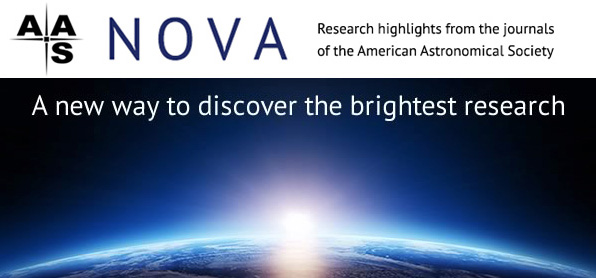Highlights from AAS Nova: 25 February - 10 March 2018

Susanna Kohler American Astronomical Society (AAS)
AAS Nova provides brief highlights of recently published articles from the AAS journals, i.e., The Astronomical Journal (AJ) and The Astrophysical Journal (ApJ), ApJ Letters, and ApJ Supplements. The website's intent is to gain broader exposure for AAS authors and to provide astronomy researchers and enthusiasts with summaries of recent, interesting research across a wide range of astronomical fields.
The following are the AAS Nova highlights from the past two weeks; follow the links to read more, or visit the AAS Nova webpage for more posts.
9 March 2018
Signs of Asymmetry in Exploding Stars
How can we use observations to learn more about the morphology of supernova remnants?
7 March 2018
The Fate of Exomoons when Planets Scatter
Planet interactions are thought to be common as solar systems are first forming and settling down. But what impact do these close encounters have on the moons of these planets?
6 March 2018
Imaged Companion Drives Spiral Arms in Disk
Astrobites reports on the spiral arms seen in the protoplanetary disk around HD 100453 A, which appear to be caused by the star’s M-dwarf companion.
5 March 2018
Featured Image: A New Dark Vortex on Neptune
These Hubble images track a rare dark vortex in Neptune’s atmosphere as it evolves over the span of two years.
2 March 2018
Looking Back at 500 AAS Nova Highlights
AAS Nova is celebrating the publication of its 500th Highlight since its launch in August of 2015.
28 February 2018
Jets from Young Stars in Cygnus-X
Young stars often reveal their presence with energetic outflows and jets. A new study has now discovered hundreds of these signatures in the Cygnus-X star-forming region.
27 February 2018
It’s Complicated: Three-Body Interactions Can Affect LIGO’s Binary Black Hole Mergers
Astrobites explores the process through which a number of “strangers” — unassociated black holes — might interact and eventually merge.
26 February 2018
PALFA Discovers Neutron Stars on a Collision Course
A pair of neutron stars has been found orbiting each other once every 1.88 hours! What can this extremely relativistic binary teach us?


